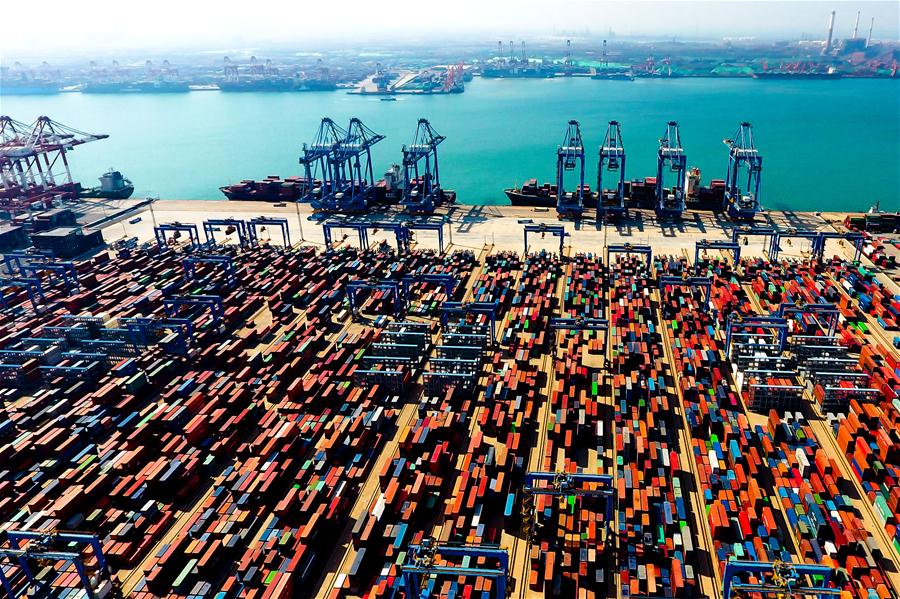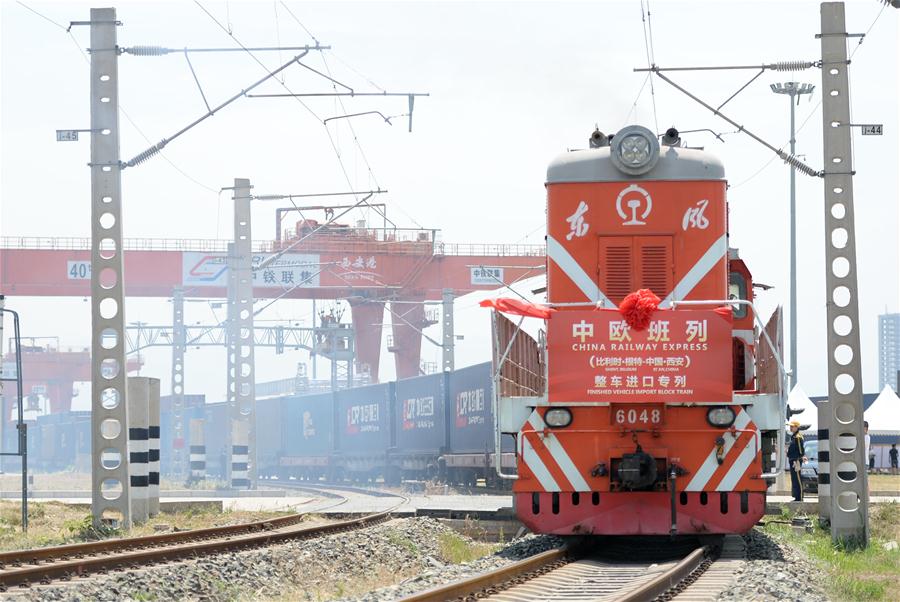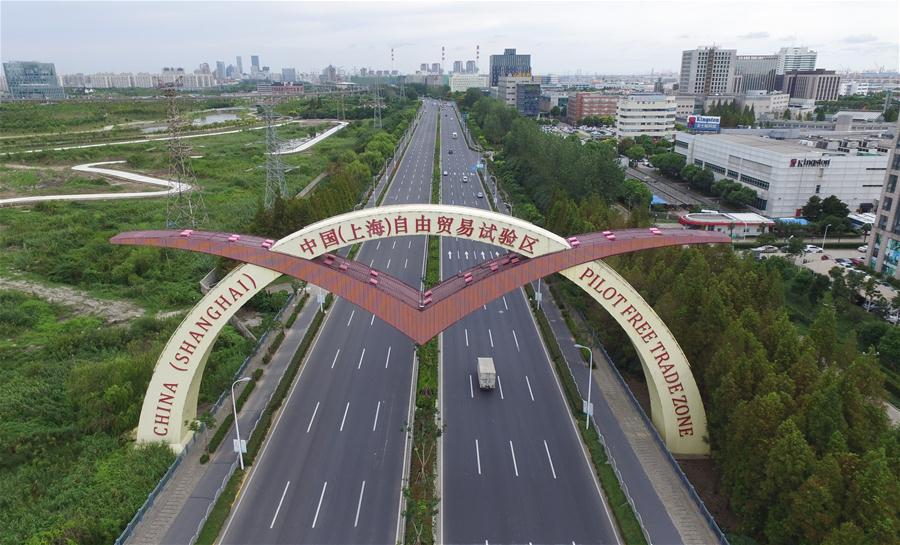WTO gets assurances from China
White paper unveils further moves for opening-up, reducing tariffs
China continues to honor the commitments it made to enter the World Trade Organization and could benefit more from further steps to open its economy, analysts said after the central government released a white paper on Thursday.
In the white paper, titled China and the World Trade Organization, the government reiterated that it pursues a mutually beneficial trade strategy and that China will continue to open up in "a more comprehensive, profound and diversified way".
Wang Shouwen, vice-minister of commerce, said China has been a key engine for world economic recovery and growth since 2002, contributing on average nearly 30 percent annually of global economic growth.
He said China's reform and opening-up campaign over the past 40 years has far more than fulfilled its commitments for WTO access, and it has become a major trading partner of more than 120 countries and regions.
 Aerial photo taken on May 4, 2018 shows the Qianwan Container Terminal in Qingdao, East China's Shandong province. [Photo/Xinhua]
Aerial photo taken on May 4, 2018 shows the Qianwan Container Terminal in Qingdao, East China's Shandong province. [Photo/Xinhua]
The documents provide ample examples and data showing what China has done to observe and uphold WTO rules. They fully demonstrate support for a multilateral trading system that is open, transparent, inclusive and nondiscriminatory.
The white paper shows China has been an active participant, strong supporter of and major contributor to the multilateral trading system.
"China has not only honored its WTO entry commitments, but also pushed itself to go much further in the scope and depth of opening-up," said Song Hong, an international trade researcher at the Chinese Academy of Social Sciences.
Further opening-up in more key sectors will surely benefit the country as well as the global economy, given the vast size of the Chinese market and the great potential of the country's innovation industry and high-end manufacturing sector, said Yang Weiyong, an economics professor at the University of International Business and Economics in Beijing.
 A freight train loaded with imported finished vehicles arrives at a railway container terminal in Xi'an, Northwest China's Shaanxi province, June 13, 2018. [Photo/Xinhua]
A freight train loaded with imported finished vehicles arrives at a railway container terminal in Xi'an, Northwest China's Shaanxi province, June 13, 2018. [Photo/Xinhua]
China, which joined the WTO in 2001, issued a new "negative list" on Thursday that sets out which of its industries are closed to foreign investors. It was first drawn up in 1995 and has previously been revised seven times.
Thursday's new list cuts the restrictions from 63 to 48, especially in service industry, infrastructure, railway passenger transportation, international shipping, grain purchases and wholesales. It will become effective on July 28.
The pledge to widen access to Chinese markets and pursue a win-win strategy for China's trading partners comes as Beijing and Washington remain locked in a tit-for-tat import tariff threats.
China's stance of further opening-up and being more inclusive is in a sharp contrast to its rival's protectionist stance, Yang said.
It is clear who is right and who is wrong — the truth will eventually emerge, Yang added.
 Aerial photo taken on Sept 21, 2016 shows a view of the China (Shanghai) Pilot Free Trade Zone in Shanghai. [Photo/Xinhua]
Aerial photo taken on Sept 21, 2016 shows a view of the China (Shanghai) Pilot Free Trade Zone in Shanghai. [Photo/Xinhua]
"The new negative list certainly is shorter and opens more sectors, especially the financial sector," said Mei Xinyu, a researcher at the Chinese Academy of International Trade and Economic Cooperation.
More preferential policies and lower market thresholds have been granted for foreign-provided services, Mei added.
The white paper said China has revised the catalog for the Guidance of Foreign Investment Industries twice over the past five years, reducing restrictive measures on foreign investment by 65 percent.
The government will ease market access by removing the equity cap on foreign investment in sectors such as shipbuilding and aircraft and automobile manufacturing.
 Photo taken on Jan 17, 2016 shows the stone monument in front of the headquarter building of the Asian Infrastructure Investment Bank (AIIB) in downtown Beijing, capital of China. [Photo/Xinhua]
Photo taken on Jan 17, 2016 shows the stone monument in front of the headquarter building of the Asian Infrastructure Investment Bank (AIIB) in downtown Beijing, capital of China. [Photo/Xinhua]
Since becoming a WTO member in 2001, China has comprehensively honored its tariff reduction commitments, lowering tariffs, upgrading its tariff catalog and improving the tariff structure, said Tu Xinquan, of the University of International Business and Economics in Beijing.
From 2001 to 2017, China's imports in goods jumped from $243.6 billion to $1.84 trillion, with an average annual growth of 13.5 percent, making the country the world's second-largest importer, data from the documents show.
Wang Shouwen, the vice-minister, said China has taken further initiatives to cut its import tariffs on certain medicines and will substantially reduce import duties on automobiles and parts as well as a number of daily consumer goods starting from Sunday.
Reuters and Xinhua contributed to this story.
Contact the writers at zhongnan@ chinadaily.com.cn




